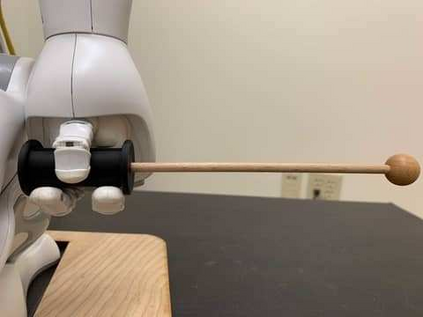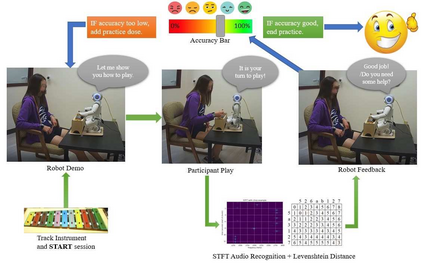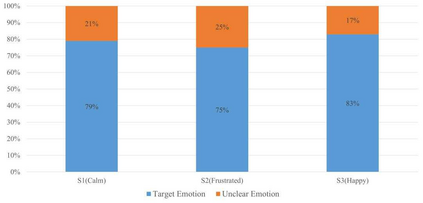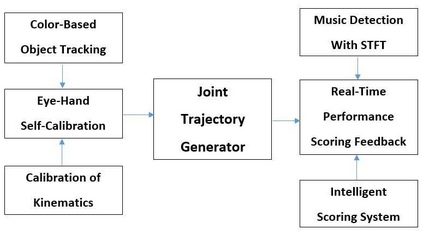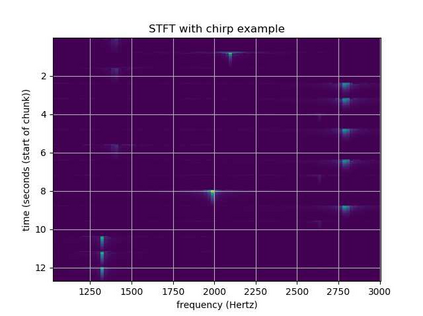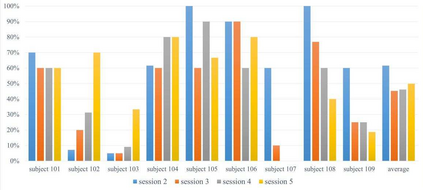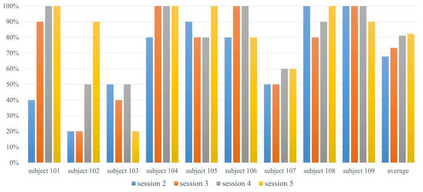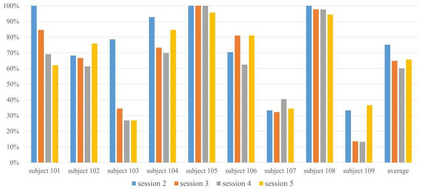Children with Autism Spectrum Disorder (ASD) experience deficits in verbal and nonverbal communication skills including motor control, turn-taking, and emotion recognition. Innovative technology, such as socially assistive robots, has shown to be a viable method for Autism therapy. This paper presents a novel robot-based music-therapy platform for modeling and improving the social responses and behaviors of children with ASD. Our autonomous social interactive system consists of three modules. We adopted Short-time Fourier Transform and Levenshtein distance to fulfill the design requirements: a) "music detection" and b) "smart scoring and feedback", which allows NAO to understand music and provide additional practice and oral feedback to the users as applicable. We designed and implemented six Human-Robot-Interaction (HRI) sessions including four intervention sessions. Nine children with ASD and seven Typically Developing participated in a total of fifty HRI experimental sessions. Using our platform, we collected and analyzed data on social behavioral changes and emotion recognition using Electrodermal Activity (EDA) signals. The results of our experiments demonstrate most of the participants were able to complete motor control tasks with ~70% accuracy. Six out of the 9 ASD participants showed stable turn-taking behavior when playing music. The results of automated emotion classification using Support Vector Machines illustrate that emotional arousal in the ASD group can be detected and well recognized via EDA bio-signals. In summary, the results of our data analyses, including emotion classification using EDA signals, indicate that the proposed robot-music based therapy platform is an attractive and promising assistive tool to facilitate the improvement of fine motor control and turn-taking skills in children with ASD.
翻译:Autism Spectrum障碍儿童(ASD)在语言和非语言交流技能(包括运动控制、翻转和情绪识别)方面有缺陷。创新技术(如社会辅助机器人)证明是治疗自闭症的一种可行方法。本文展示了一个新型机器人音乐治疗平台,用于模拟和改进儿童使用ASD的社会反应和行为。我们的自主社会互动系统由三个模块组成。我们采用了短期Fourier变换和Levenshtein距离,以满足设计要求:a)“音乐检测”和b)“智能评分和反馈”,使NAO能够理解音乐,并在适用的情况下向用户提供更多的实践和口头反馈。我们设计并实施了六次人类机器人互动(HRI)会议,包括四次干预会议。9名ASD和7个典型儿童参加了总共50个HRI实验会议。我们利用我们的平台,收集并分析了社会行为变化和情感识别数据,利用电磁感调节(EDASDA)改进信号。我们的实验结果显示大多数参与者能够完成汽车控制任务,包括使用9-70 %的动作分析结果显示稳定的ESDA。支持一个稳定的智能分析。


